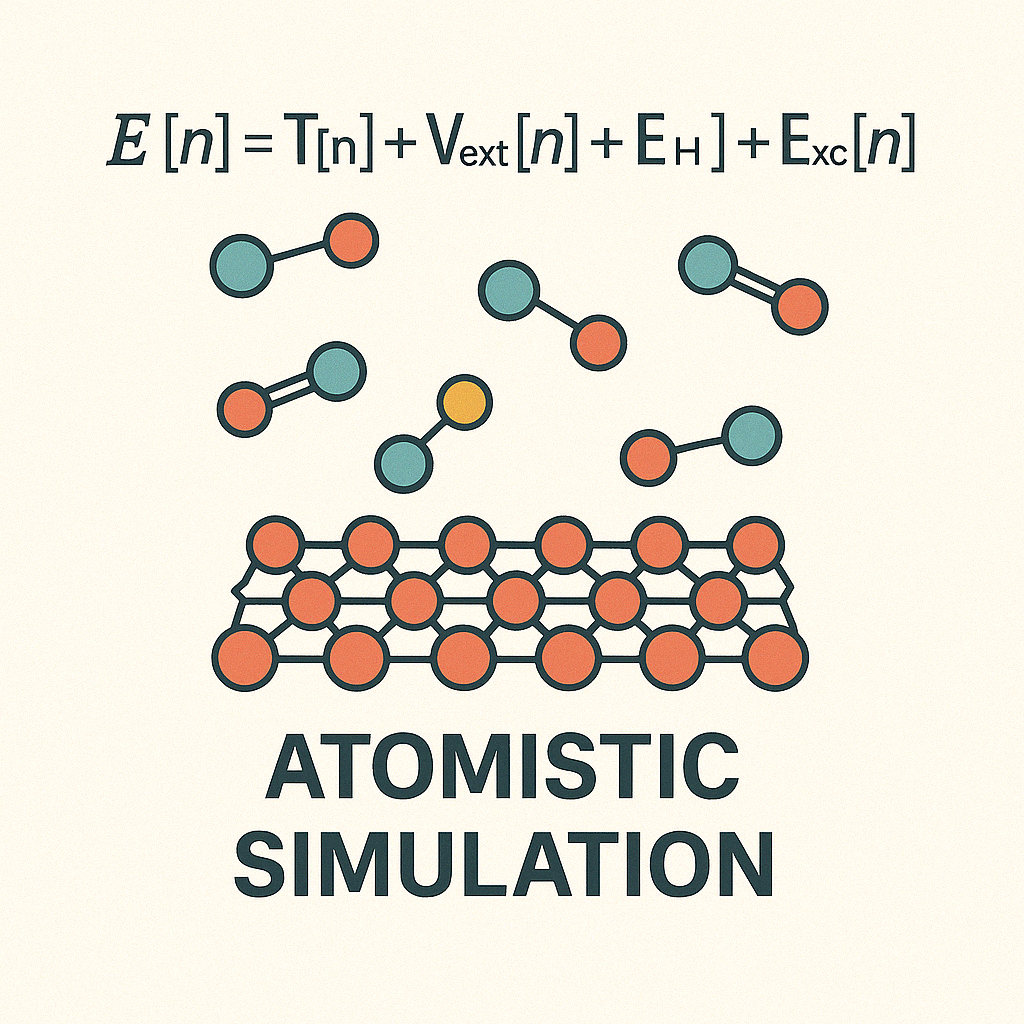Atomistic Simulation
Exploring the Microscopic World Through Advanced Computational Methods
All matter in our surroundings is made up of atoms—comprising electrons, nuclei, and neutrons—that are invisible to the naked eye. Remarkably, the fundamental properties of matter are governed by complex interactions, particularly those between electrons and nuclei, as well as electron-electron interactions. Traditional Newtonian mechanics, which effectively describes motion at the macroscopic level, falls short when applied to these atomic-scale phenomena. To truly understand the microscopic world, we must turn to quantum mechanics.
Among the most widely adopted theoretical approaches for studying materials at the atomic level are first-principles density functional theory (DFT) and molecular dynamics (MD). These methods, combined with the power of high-performance supercomputers, allow us to accurately and efficiently simulate and predict the intrinsic properties of materials and biological systems at the atomic and molecular levels—without the need for physical experimentation. This capability is a critical asset in accelerating the discovery of new materials.
In this context, the CAIM Lab is dedicated to leading advancements in material simulations through the use of state-of-the-art computational techniques and supercomputing resources. Our primary focus includes the discovery of next-generation energy materials (catalysis, battery, solar), as well as uncovering the fundamental mechanisms that drive their behavior. To enhance the predictive capabilities of our simulations, we aim to refine existing theoretical models and develop new methodologies. Additionally, we are committed to creating highly accurate atomic potentials that can be directly applied in drug discovery and development. Through these initiatives, the CAIM Lab strives to become a pioneering force in the future of materials science.
-
Enhancing Fuel Cell Durability with Heteroenergetic TaOx-Carbon Support
ACS Energy Letters 9, 4265 (2024)
Indirect-to-direct bandgap transition in GaP semiconductors through quantum shell formation on ZnS nanocrystals
Nature Communications 15:8125 (2024)
Efficient and Sustainable Water Electrolysis Achieved by Excess Electron Reservoir Enabling Charge Replenishment to Catalysts
Nature Communications 14:5402 (2023)


